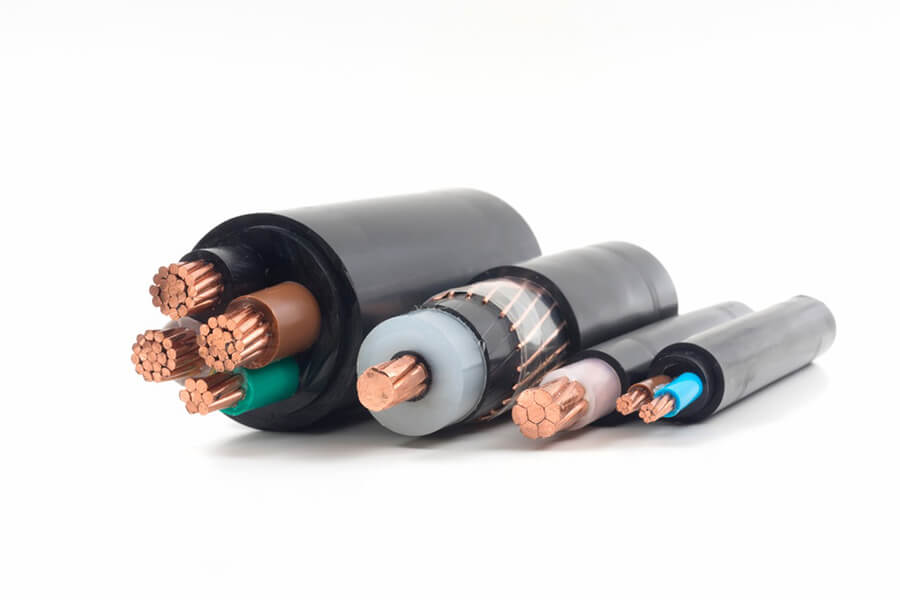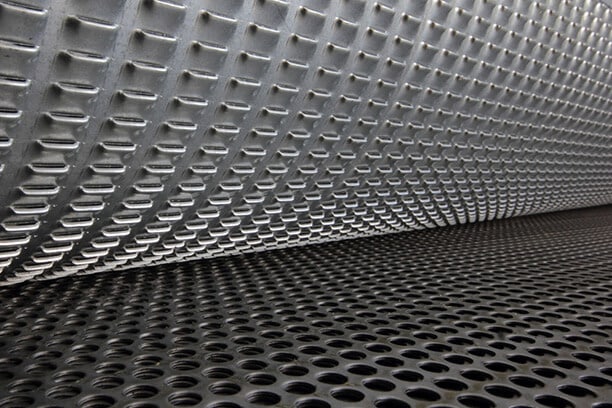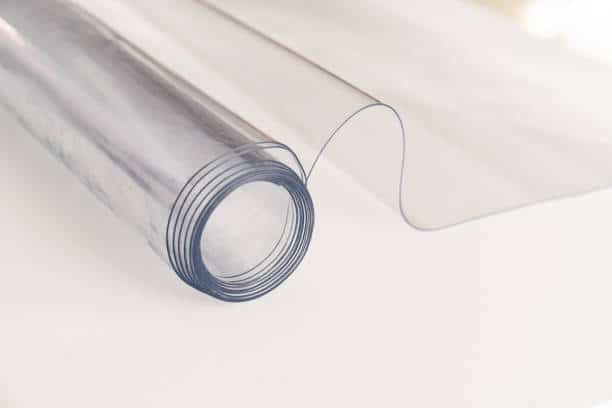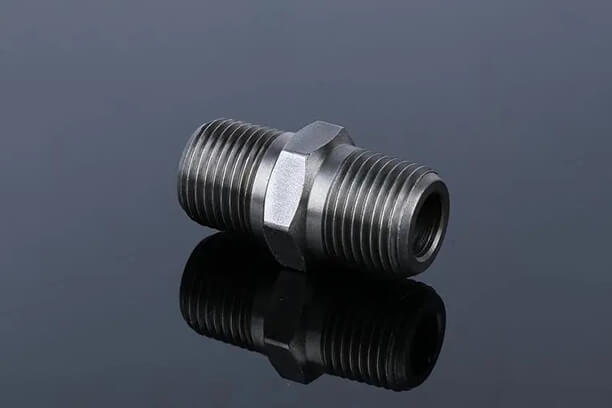The wire gauge is a system used to measure the size of a wire. It determines the wire’s capacity to safely carry electric current, as well as its electrical resistance and weight. Standardized wire gauges have been developed to assist in selecting the appropriate wires for specific purposes.
In this guide, we offer an introduction to the American Wire Gauge (AWG), how to calculate wire gauge, and provide access to the AWG chart (also known as a wire gauge chart) and AWG convert chart. These charts include detailed data for reference and download to help select the correct wire gauge for different applications.
What is American Wire Gauge?
The thickness of a wire is referred to as its gauge. Each gauge is denoted by a number, where smaller numbers indicate thicker wire gauges and larger numbers indicate thinner wires.
American Wire Gauge (AWG) is a standardized method used in the United States to measure and identify the thickness of electrically conductive wires. It’s well-suited for determining gauges suitable for round and solid conductive wires crafted from non-ferrous materials. Because the thickness of a wire directly impacts its electrical characteristics, such as resistance and load-carrying capacity, knowing the wire’s gauge enables industry experts to efficiently assess its suitability for specific applications. This knowledge can also be effectively conveyed between different parties, such as from manufacturers to consumers.
AWG Wire Sizes
The gauge of AWG wire determines its size and can also be converted into imperial measurements. As the gauge number decreases, the wire size increases, ranging from 40 gauge down to 0 gauge or 0.325 inches. Wire sizes larger than 0-gauge are denoted by 00, 000, and so forth. Working with wire of a lower gauge can be more challenging and may require the use of larger wire cutters.
AWG differs for solid wire and stranded wire. While the standard measurement tool can determine the size of both, the written gauge size provides more specificity. This is because the measurement takes into account the tiny gaps between each individual woven strand. Each strand has the same gauge and is listed along with the total number of strands.
For instance, a wire classified as 6-gauge might consist of seven wire strands, each with a gauge size of 14. In this case, the AWG size of the wire would be designated as “6 AWG 7/14.”
It’s essential to keep in mind that this concept differs from the conductor counts typically indicated on wire packaging. When a wire spool is labeled as “12/2,” it signifies the gauge size of each cable contained within the wire, followed by the number of conductors. Each conductor can be individually separated to establish connections with outlets or appliance connectors, forming a circuit originating from the breaker box. Every wire also includes a grounding cable. Therefore, a “12/2” wire would have a total of three cables running inside it.

American Wire Gauge (AWG) Sizes and Properties Chart
The following table presents the American Wire Gauge (AWG) sizes for electrical cables and conductors. The AWG standards encompass a range starting from 0000, capable of handling up to 302 amps, down to 40, which can handle up to 0.0137 amps. For most household and commercial wiring needs, the typical AWG sizes range from 2 (with a maximum capacity of 95 amps) or 3 (with a maximum capacity of 85 amps) to 14 (with a maximum capacity of 15 amps).
The table also provides values for load (current) carrying capacity, resistance, and skin effects. The resistance and skin depth data specified apply specifically to copper conductors. A comprehensive explanation of each conductor property is provided below the table for further understanding.
| AWG gauge | Diameter | Cross-sectional area (mm2) | Resistance | Max Current (Amps) | Max Frequency (for 100% skin depth) | ||
| rgba(131, 133, 136, 1) | rgba(131, 133, 136, 1) | (Ohms/1000 ft) | |||||
| 0000 (4/0) | 0.46 | 11.684 | 107 | 0.049 | 0.16072 | 302 | 125 Hz |
| 000 (3/0) | 0.4096 | 10.40384 | 84.9 | 0.0618 | 0.202704 | 239 | 160 Hz |
| 00 (2/0) | 0.3648 | 9.26592 | 67.4 | 0.0779 | 0.255512 | 190 | 200 Hz |
| 0 (1/0) | 0.3249 | 8.25246 | 53.5 | 0.0983 | 0.322424 | 150 | 250 Hz |
| 1 | 0.2893 | 7.34822 | 42.4 | 0.1239 | 0.406392 | 119 | 325 Hz |
| 2 | 0.2576 | 6.54304 | 33.6 | 0.1563 | 0.512664 | 94 | 410 Hz |
| 3 | 0.2294 | 5.82676 | 26.7 | 0.197 | 0.64616 | 75 | 500 Hz |
| 4 | 0.2043 | 5.18922 | 21.1 | 0.2485 | 0.81508 | 60 | 650 Hz |
| 5 | 0.1819 | 4.62026 | 16.8 | 0.3133 | 1.027624 | 47 | 810 Hz |
| 6 | 0.162 | 4.1148 | 13.3 | 0.3951 | 1.295928 | 37 | 1100 Hz |
| 7 | 0.1443 | 3.66522 | 10.6 | 0.4982 | 1.634096 | 30 | 1300 Hz |
| 8 | 0.1285 | 3.2639 | 8.37 | 0.6282 | 2.060496 | 24 | 1650 Hz |
| 9 | 0.1144 | 2.90576 | 6.63 | 0.7921 | 2.598088 | 19 | 2050 Hz |
| 10 | 0.1019 | 2.58826 | 5.26 | 0.9989 | 3.276392 | 15 | 2600 Hz |
| 11 | 0.0907 | 2.30378 | 4.17 | 1.26 | 4.1328 | 12 | 3200 Hz |
| 12 | 0.0808 | 2.05232 | 3.31 | 1.588 | 5.20864 | 9.3 | 4150 Hz |
| 13 | 0.072 | 1.8288 | 2.63 | 2.003 | 6.56984 | 7.4 | 5300 Hz |
| 14 | 0.0641 | 1.62814 | 2.08 | 2.525 | 8.282 | 5.9 | 6700 Hz |
| 15 | 0.0571 | 1.45034 | 1.65 | 3.184 | 10.44352 | 4.7 | 8250 Hz |
| 16 | 0.0508 | 1.29032 | 1.31 | 4.016 | 13.17248 | 3.7 | 11 k Hz |
| 17 | 0.0453 | 1.15062 | 1.04 | 5.064 | 16.60992 | 2.9 | 13 k Hz |
| 18 | 0.0403 | 1.02362 | 0.823 | 6.385 | 20.9428 | 2.3 | 17 kHz |
| 19 | 0.0359 | 0.91186 | 0.653 | 8.051 | 26.40728 | 1.8 | 21 kHz |
| 20 | 0.032 | 0.8128 | 0.519 | 10.15 | 33.292 | 1.5 | 27 kHz |
| 21 | 0.0285 | 0.7239 | 0.412 | 12.8 | 41.984 | 1.2 | 33 kHz |
| 22 | 0.0253 | 0.64516 | 0.327 | 16.14 | 52.9392 | 0.92 | 42 kHz |
| 23 | 0.0226 | 0.57404 | 0.259 | 20.36 | 66.7808 | 0.729 | 53 kHz |
| 24 | 0.0201 | 0.51054 | 0.205 | 25.67 | 84.1976 | 0.577 | 68 kHz |
| 25 | 0.0179 | 0.45466 | 0.162 | 32.37 | 106.1736 | 0.457 | 85 kHz |
| 26 | 0.0159 | 0.40386 | 0.128 | 40.81 | 133.8568 | 0.361 | 107 kHz |
| 27 | 0.0142 | 0.36068 | 0.102 | 51.47 | 168.8216 | 0.288 | 130 kHz |
| 28 | 0.0126 | 0.32004 | 0.080 | 64.9 | 212.872 | 0.226 | 170 kHz |
| 29 | 0.0113 | 0.28702 | 0.0647 | 81.83 | 268.4024 | 0.182 | 210 kHz |
| 30 | 0.01 | 0.254 | 0.0507 | 103.2 | 338.496 | 0.142 | 270 kHz |
| 31 | 0.0089 | 0.22606 | 0.0401 | 130.1 | 426.728 | 0.113 | 340 kHz |
| 32 | 0.008 | 0.2032 | 0.0324 | 164.1 | 538.248 | 0.091 | 430 kHz |
| Metric 2.0 | 0.00787 | 0.200 | 0.0314 | 169.39 | 555.61 | 0.088 | 440 kHz |
| 33 | 0.0071 | 0.18034 | 0.0255 | 206.9 | 678.632 | 0.072 | 540 kHz |
| Metric 1.8 | 0.00709 | 0.180 | 0.0254 | 207.5 | 680.55 | 0.072 | 540 kHz |
| 34 | 0.0063 | 0.16002 | 0.0201 | 260.9 | 855.752 | 0.056 | 690 kHz |
| Metric 1.6 | 0.0063 | 0.16002 | 0.0201 | 260.9 | 855.752 | 0.056 | 690 kHz |
| 35 | 0.0056 | 0.14224 | 0.0159 | 329 | 1079.12 | 0.044 | 870 kHz |
| Metric 1.4 | .00551 | .140 | 0.0154 | 339 | 1114 | 0.043 | 900 kHz |
| 36 | 0.005 | 0.127 | 0.0127 | 414.8 | 1360 | 0.035 | 1100 kHz |
| Metric 1.25 | .00492 | 0.125 | 0.0123 | 428.2 | 1404 | 0.034 | 1150 kHz |
| 37 | 0.0045 | 0.1143 | 0.0103 | 523.1 | 1715 | 0.0289 | 1350 kHz |
| Metric 1.12 | .00441 | 0.112 | 0.00985 | 533.8 | 1750 | 0.0277 | 1400 kHz |
| 38 | 0.004 | 0.1016 | 0.00811 | 659.6 | 2163 | 0.0228 | 1750 kHz |
| Metric 1 | .00394 | 0.1000 | 0.00785 | 670.2 | 2198 | 0.0225 | 1750 kHz |
| 39 | 0.0035 | 0.0889 | 0.00621 | 831.8 | 2728 | 0.0175 | 2250 kHz |
| 40 | 0.0031 | 0.07874 | 0.00487 | 1049 | 3440 | 0.0137 | 2900 kHz |
Calculation Formula for Wire Gauge
Wire diameter:
- dn (in) = 0.005 in × 92(36-n)/39
- dn (mm) = 0.127 mm × 92(36-n)/39
Wire cross-sectional area:
- An (kcmil) = 1000×dn2 = 0.025 in2 × 92(36-n)/19.5
- An (in2) = (π/4)×dn2 = 0.000019635 in2 × 92(36-n)/19.5
- An (mm2) = (π/4)×dn2 = 0.012668 mm2 × 92(36-n)/19.5
Wire resistance:
- Rn (Ω/kft) = 0.3048 × 109 × ρ(Ω·m) / (25.42 × An (in2))
- Rn (Ω/km) = 109 × ρ(Ω·m) / An (mm2)
American Wire Gauge Conversion Chart
| AWG gauge | Diameter | Cross-sectional area (mm2) | Resistance (ohms /1000 ft) | Ampacity (at rated maximum temp.) | ||||||
| COPPER | ALUMINUM | |||||||||
| 60°C (140°F)NM-B, UF-B | 75°C (167°F)THW, THWN,SE, USE, XHHW | 90°C (194°F)THWN-2, THHN,XHHW-2, USE-2 | 75°C (167°F)THW, THWN,SE, USE, XHHW | 90°C (194°F)XHHW-2, THHN,THWN-2 | ||||||
| (inch) | (mm) | COPPER | ALUMINUM | |||||||
| 0000 (4/0) | 0.4600 | 11.684 | 107 | 0.04901 | 0.0804 | - | 230 | 260 | 180 | 205 |
| 000 (3/0) | 0.4096 | 10.405 | 85.0 | 0.06180 | 0.101 | - | 200 | 225 | 155 | 175 |
| 00 (2/0) | 0.3648 | 9.266 | 67.4 | 0.07793 | 0.128 | - | 175 | 195 | 135 | 150 |
| 0 (1/0) | 0.3249 | 8.251 | 53.5 | 0.09827 | 0.161 | - | 150 | 170 | 120 | 135 |
| 2 | 0.2576 | 6. 544 | 33.6 | 0.1563 | 0.256 | 95 | 115 | 130 | 90 | 100 |
| 4 | 0.2043 | 5.189 | 21.2 | 0.2485 | 0.408 | 70 | 85 | 95 | 65 | 75 |
| 6 | 0.1620 | 4.115 | 13.3 | 0.3951 | 0.648 | 55 | 65 | 75 | 50 | 55 |
| 8 | 0.1285 | 3.264 | 8.37 | 0.6282 | 1.03 | 40 | 50 | 55 | 40 | 45 |
| 10 | 0.1019 | 2.588 | 5.26 | 0.9989 | 1.64 | 30 | 35 | 40 | 30 | 35 |
| 12 | 0.0808 | 2.053 | 3.31 | 1.588 | 2.61 | 20 | 25 | 30 | 20 | 25 |
| 14 | 0.0641 | 1.628 | 2.08 | 2.525 | 4.14 | 15 | 20 | 25 | - | - |
| 16 | 0.0508 | 1.291 | 1.31 | 4.016 | 6.59 | - | 17 | - | - | - |
| 18 | 0.0403 | 1.024 | 0.823 | 6.385 | 10.5 | - | 14 | - | - | - |
| 20 | 0.0320 | 0.812 | 0.518 | 0.06180 | 0.101 | - | 11 | - | - | - |
The chart displayed above depicts a wire gauge chart that facilitates the conversion of AWG wire sizes. It provides the corresponding diameter in inches, millimeters, and cross-sectional area for each AWG size. Additionally, the chart includes data on the resistance and rated ampacity for commonly used wire types. Each wire type is categorized by the metal utilized, its maximum temperature rating, and the specific insulation types encompassing the wire. Each row within the chart presents a wire gauge size along with its associated properties.
The most prevalent wire types used in residential settings are Non-metallic (NM) and Underground Feeder (UF) cables. NM cable is employed to support outlets, and appliances, and connect them to the breaker box within a home. On the other hand, UF cable is suitable for outdoor applications, serving as electrical wiring to supply power to outdoor lights and other electronic devices.
The chart contains different wire types that are categorized based on their insulation. The abbreviations indicating the insulation types are given for each corresponding group.
For instance, THHN cable is commonly used in control circuits, construction, machine tools, and large appliances.
- T: Thermoplastic
- H: Heat Resistance
- HH: High Heat Resistance
- N: Nylon-coated
- W: Water Resistance
XHHW cable is utilized in numerous commercial, industrial, and residential structures. The “X” in XHHW represents cross-linked polyethylene, while the remaining letters have the same significance as in the THHN category.
Technical Specs in AWG
The wire gauge provides more than just the thickness of the wire; it also allows industry professionals to ascertain the following information about a specific wire:
- Diameter. The diameter of a wire is indicated by its gauge, which can range from low numbers to high numbers. Smaller gauge numbers correspond to smaller diameters, while larger gauge numbers indicate larger diameters. For instance, a wire with AWG 4 has a diameter of 0.2043 inches, whereas a wire with AWG 40 has a diameter of 0.0031 inches. The diameter of the wire doubles whenever the gauge decreases by six levels. For example, a three-gauge wire has twice the diameter of a nine-gauge wire.
- Area. The cross-sectional area of round wires can be determined by using the formula A = πr^2, where r is half the diameter of the wire. Every time the wire gauge decreases by three levels, the cross-sectional area of the wire doubles. For example, a six-gauge wire has twice the cross-sectional area of a nine-gauge wire.
- Feet per pound. It’s a measurement that indicates how many feet of wire are required to reach one pound in weight. For instance, AWG 4 wire requires 7.918 feet to weigh one pound, while AWG 40 wire requires 34.364 feet to weigh one pound.
- Resistance (ohms per 1000 feet). This is a measure of a wire’s electrical resistance, which is influenced by its length and thickness. Longer wires tend to have higher resistance compared to shorter wires. When comparing wires of the same length, the thicker wire will have lower resistance than the thinner wire. For instance, at a temperature of 25°C, AWG 4 wire has a resistance of 0.2485Ω per 1000 feet, while AWG 40 wire has a resistance of 1079Ω per 1000 feet.
- Current capacity (amps). It refers to the maximum amount of current that a wire can safely carry. Wires with lower gauge numbers, such as AWG 4, have a greater thickness, allowing them to accommodate a higher number of electrons compared to wires with higher gauge numbers, such as AWG 40.
Wire Size & Amp Ratings
Ampacity refers to the maximum amount of current a wire can safely conduct without overheating. The ampacity of a wire depends on factors such as the AWG size and insulation. It’s crucial to ensure that the wire’s ampacity is not exceeded when connecting it to a circuit. Insulation plays a role in determining the wire’s ampacity as it can withstand varying levels of heat, which can improve the wire’s relative ampacity. Generally, a lower gauge wire will have a higher-rated ampacity compared to a higher gauge wire because the larger diameter of the wire allows it to carry more electrical current.
Electrical wires are not typically operated at their maximum-rated ampacity. This is because all wires possess a certain level of electrical resistance, which ultimately reduces the wire’s output. The tendency for electrical current to predominantly flow along the surface of conductors contributes to increased resistance.
To ensure safe operation, it’s essential that a wire has an ampacity equal to or higher than the maximum amps of the connected circuit. If the electrical circuit exceeds the ampacity of the wire, it may result in overheating. When setting up circuits in a residential or commercial environment, consider the specific electronic devices that the circuits will be serving. Different ampacities of wires are commonly utilized for various applications, including:
- 1/0-gauge, 150 amps: Service entrance and feeder wire
- 3/0-gauge, 200 amps: Service entrance
- 6-gauge, 55 amps: Large appliances and feeder wire
- 10-gauge, 30 amps: Dryers, air conditioners, appliances
- 12-gauge, 20 amps: GFCI circuits, appliance, and laundry
- 14-gauge, 15 amps: Ceiling fans, outlets, and lighting
It’s possible to connect all of these circuit types to a single breaker box without causing the main breaker to overheat. Most residential breaker boxes have a capacity of 100-200 amps. However, it’s important to ensure that no circuit operates above 80% of its maximum rated ampacity. Running a circuit beyond its capacity can result in power surges, outages, and even fire hazards.
In a 200-amp breaker box, it’s feasible for all circuits to operate simultaneously as long as their combined electrical demand does not exceed 160 amps. Different areas of a home typically have specific circuit requirements. For instance, bedrooms and living rooms usually have either a 15-amp or 20-amp circuit responsible for powering both lighting and outlets. Bathrooms typically have a dedicated 20-amp circuit for outlets and a separate 15-amp circuit for lights. Kitchens typically require six or seven 20-amp circuits to accommodate large appliances, outlets, dishwashers, microwaves, and garbage disposal. However, it is unusual for homeowners to draw maximum electricity simultaneously from all circuits. Therefore, in a house with around 10 to 20 circuits carrying loads of 15 to 55 amps each, it’s rare for the main breaker to cut off power.
Factors You Should Consider about Wire Gauges
When choosing an electrically conductive wire for a particular application, the gauge of the wire is an important factor to consider. However, the appropriate gauge depends on several factors. For instance, circuits with higher amperage ratings require thicker wires to handle the load effectively and prevent excessive heat buildup. Using wires that are too thin for the specified circuit amperage can lead to wire failure or even fires. To avoid such issues, it’s crucial to determine the total amperage of the system by calculating the effects of the circuit length, planned load, and connected load. Based on this calculation, an appropriate wire can be selected to ensure safe and efficient operation.
Usage of Different Wire Gauges
Due to variations in their physical and electrical properties, different wire gauges are typically suitable for specific purposes. Thinner wire gauges are commonly used in lighter applications, whereas thicker gauges are typically employed for heavy-duty applications.
Some common use cases for different wire gauges are outlined below:
- Gauge 4 – large heaters and furnaces
- Gauge 6 – kitchen cooktops and ranges
- Gauge 10 – water heaters, clothes dryers, and large AC units
- Gauge 12 – small AC units and residential outlets
- Gauge 14 – circuits, lighting fixtures, and devices
- Gauge 16 – light-duty extension cords
- Gauge 18 – low-voltage lighting and cords
Stranded vs. Solid Wire
When selecting wire, it’s important to consider the style that suits your requirements. Wire can be either stranded or consist of a solid copper conductor. In installations using metal conduits, solid wire may not be as easy to pull through if the conduit has multiple bends. However, solid wire is often preferable for securing under screw terminals, such as those found on standard switches and receptacles. In typical household wiring applications, the wire conductors in conduit or NM cable are generally 14-, 12-, or 10-gauge solid copper conductors.
Conclusion
Wires are available in various thicknesses, known as gauges, each serving different purposes. The gauge determines the wire’s capacity to conduct amperes (amps) without overheating. If a wire overheats, it can lead to the insulation melting off and potentially causing a fire. Hence, it’s crucial to determine the appropriate gauge size for wires used to connect appliances, outlets, and switchboxes to a breaker box. In this article, we discuss what the American Wire Gauge (AWG) is, including an AWG chart (wire gauge chart) and an AWG conversion chart with detailed data for reference and downloading.
Runsom Precision is a CNC machining expert with extensive experience and technique for more than ten years. We specialize in offering customers worldwide precision CNC machining services with custom machined parts in tight tolerance and high quality. Our experts and engineers are proficient with a wide variety of standards and specifications for specific applications and projects. Submit your files today to access our capabilities and experience time-, and cost-saving service now.
Download the PDF version:
Other Articles You May Be Interested in:





